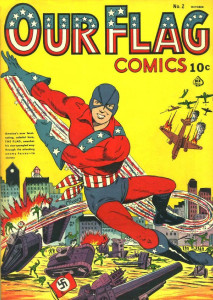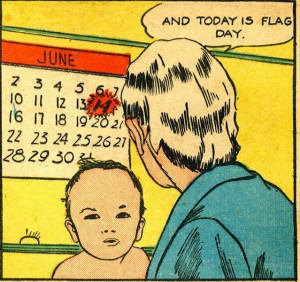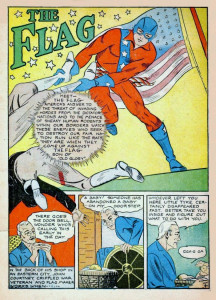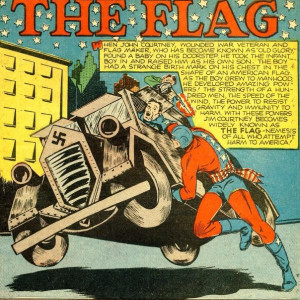American flag becomes superhero

If you think Superman, Batman and Spider-Man are the only super-heroes in comic book history, you missed one named “The Flag.” You’ve also missed his genesis story. And his brief life.
First published in 1941 and not long for the comic book world, “Our Flag” was published just as America leaned toward entering World War II. The initial installment presented the back-story of the main character, who was found as an abandoned baby, just as Superman was.

John Courtney, a military veteran and flag maker who was nicknamed “Old Glory” because of his vocation, discovered the infant on his doorstep. He noticed that the baby bore an unusual birthmark on his chest: an American flag. The newly minted father named the foundling Jim and instilled in him a deep patriotism.
As he matured, Jim began to display extraordinary skills: super-speed, for example, and incredible strength. He would deploy them, as The Flag, to defeat Nazis and other evil-doers who were bent on destroying America.

Those special talents were bestowed on him by two non-comic-book heroes: George Washington and Abraham Lincoln. The presidents paid a spectral visit to the hero-to-be and blessed him with astonishing speed and strength.
For ten cents, youngsters born during the Depression could read about their hero and his exploits, which were fictionalized, of course, but involved the real enemies the U.S. would face after Pearl Harbor was attacked in December 1941. The first “Our Flag” had come out just two months earlier.

As one comic book fan said, “The sheer over-the-top implausibility of this tale makes it a standout; it’s sort of a twisted classic in its own weird way.”
But “Our Flag” wouldn’t wave for long. After a few issues, its printing days were over. Ironically, such failure made the comic book rare and, therefore, valuable. Pristine copies of the few issues can sell for hundreds of dollars.
One final note: When “Old Glory” came upon “The Flag,” he noticed that it was Flag Day. Maybe such obviousness is why, after only five installments, the magazine folded like a banner on a windless day.
